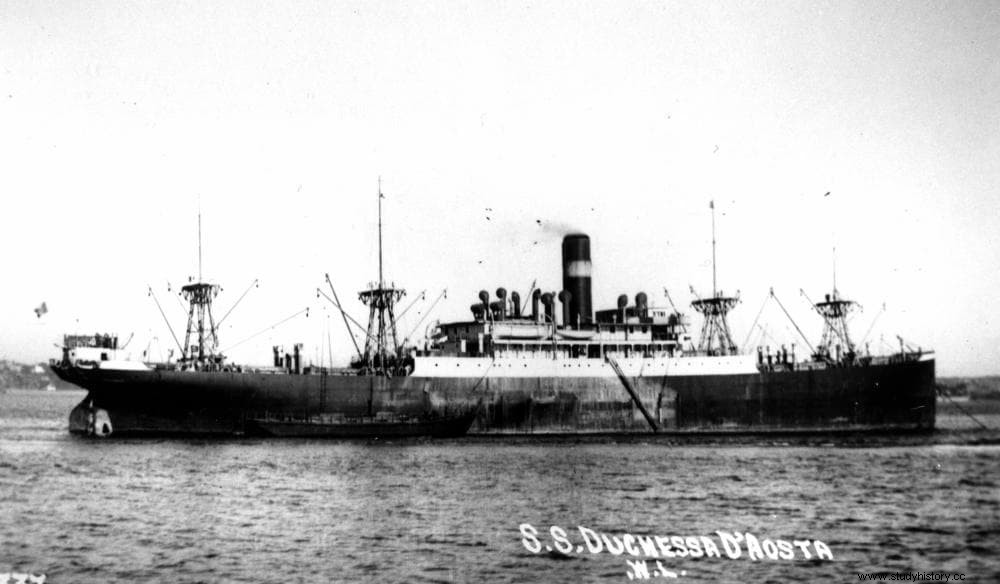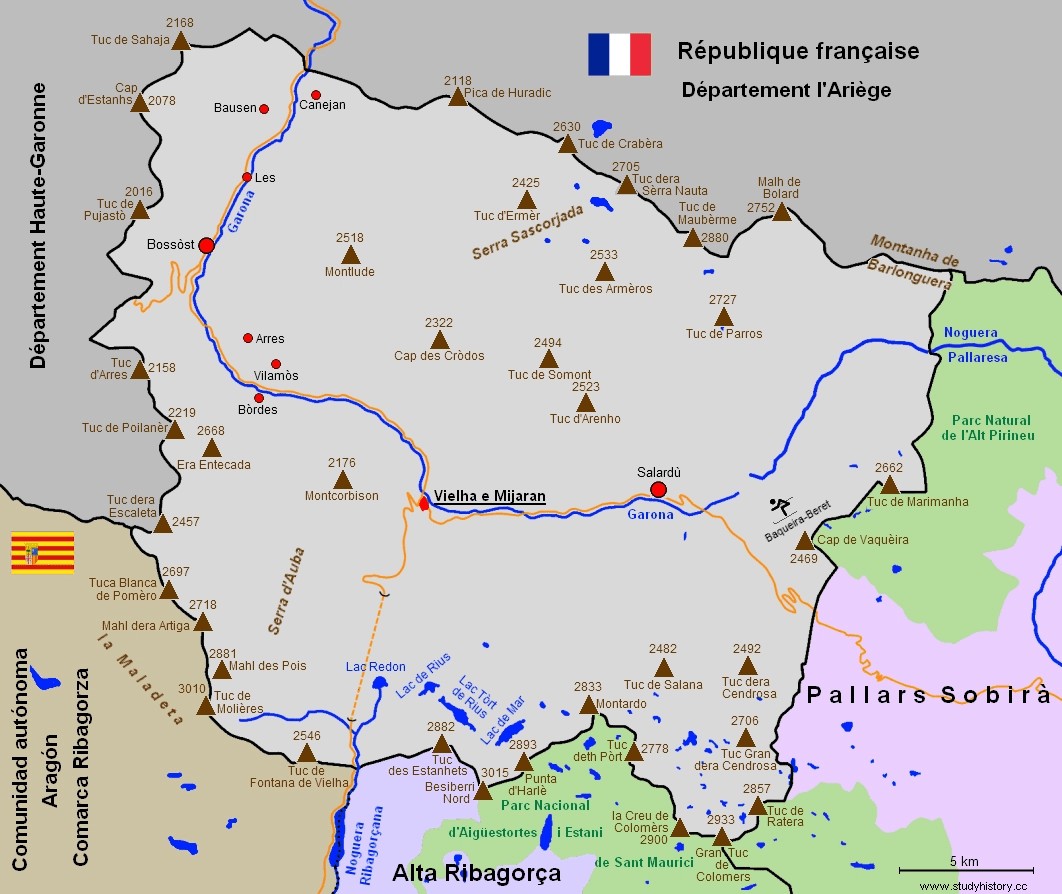Despite the fact that Spain declared itself neutral during the Second World War, throughout the campaign it maintained an ambiguous position regarding the conflict, and a policy that changed depending on the winds. An example is the declaration of war on Japan in the last months of the war, a declaration that was almost made but was finally dismissed.
There were many clashes, mainly between Spanish aviation and allied and Axis air forces, airspace violations, and confusion. Many allied pilots confused the German and Italian-made aircraft of the Spanish aviation with enemy aircraft, and for this reason there were frequent persecutions and attempts to shoot them down.
But with all the Spanish territory it was the scene of several military operations that can be framed in the course of the conflict. These are the three most outstanding.
Attacks on Gibraltar from the ship Olterra
The Olterra was an Italian oil tanker that was sunk by her own crew in the Bay of Algeciras on June 10, 1940, after Italy's entry into the war. That is the official version, although according to some records it was due to sabotage by British commandos

In 1942 she was recovered by the Decima Flottiglia MAS, a unit of diving commandos of the Italian Navy, who used her from her location in Algeciras to attack Allied ships heading for Gibraltar with human torpedoes.
Under the pretext of refloating the ship to sell it to a Spanish shipping company, Decima commandos disguised as civilian workers took control of the freighter. The ship was towed to the port of Algeciras, where repairs began, modifying it to house and maintain the human torpedoes. An observation turret was also installed on the forecastle, and a hole was opened under the waterline to allow torpedoes to be launched. These and the material necessary for its maintenance were smuggled into Spain, camouflaged as repair materials.
The operations were directed from Villa Carmela, an apartment on the coast of Algeciras, rented by a member of the Decima, Antonio Ramognino, whose wife was Spanish.
The British never found evidence that the Olterra had anything to do with the attacks on her ships, although they suspected it, until late in the war a British unit boarded the ship and found parts to mount torpedoes.
Today some parts of the ship, such as her name and some of her portholes, can be seen on display at the Italian Naval Museum in La Spezia.
Postmaster operation
In the days before the invasion of Poland (September 1, 1939), all German merchant ships were ordered to return home or seek refuge in neutral ports. Thus, more than a hundred German ships took refuge in Spanish ports. One of those ports was Santa Isabel (the capital of Spanish Equatorial Guinea, on the island of Fernando Poo). At first there were three German ships that anchored there, the Pionier, the Likomba and the Bibundi. But the Pionier left the port two months later, managing to reach Hamburg.

Similarly, on the morning of June 10, 1940, while Mussolini declared war on the Allies, an Italian ship, the Duchesa d'Aosta, sought refuge in Santa Isabel.
These three Axis ships were a source of concern to the British, as it was feared they might leave port to resupply submarines operating in the vicinity of Freetown attacking Allied merchantmen. That is why Operation Postmaster was launched.
The British prepared from Lagos a command of forty men, among whom were three exiled Republican Spanish legionnaires. On January 11, 1942, they left with the objective of carrying out the assault on the three ships on the night of the 14th and taking them away. That day there was no Spanish warship in the port, and the light in the city went out at 1 in the morning, due to lack of diesel, which facilitated the operation.
The command took half an hour to reduce the crew of the Duchessa d'Aosta, without firing a single shot. The biggest problem was cutting the anchor chains, which caused the alarm on land. However, when the artillery pieces located in Punta Ferranda received the order to open fire, the three ships had already disappeared into the darkness.
It was one of the first successes achieved by the British commandos in the war. The Italian ship was renamed and used as a troop and materiel carrier between Canada and Great Britain throughout the war. At the end of this, she was sold to an Italian shipping company, until being scrapped in 1952.
Operation Reconquest of Spain
With that bombastic name, it was baptized the invasion operation of the Aran Valley, planned by the Spanish National Union (UNE) and the Communist Party of Spain in October 1944.

It was about invading Spanish territory while provoking a popular uprising that would end the Franco regime. The plan included several diversionary attacks along the border in the Pyrenees, with the main attack through the Aran Valley, carried out by the 204th Guerrilla Division (Maquis), and the establishment of a republican provisional government on Spanish soil. that forced the allies to carry out an invasion of Spain.
On October 3, 1944, the offensive began. One brigade penetrates through Roncesvalles, another through the Roncal valley, but both are repulsed by units of the army and the Civil Guard, having to return to France. A second attempt came in the middle of the month, this time from Hendaye, again meeting strong opposition and having to withdraw eight days later.
On October 19, the definitive attack on the Arán Valley began with the 204th Division divided into three columns, which were to converge south of Viella. They quickly manage to capture several hamlets and the next day they establish the General Staff in Bosost, where the main battles take place.
But the arrival of reinforcements from the Francoist army, including units from the Legion, left the maquis in numerical and material inferiority. Seeing that the expected popular uprising did not take place either, and given the possibility that the guerrillas would be surrounded, on October 22 Santiago Carrillo ordered the withdrawal.
The operation was a total failure, with 129 guerrillas killed and 588 wounded, for 32 deaths of the Francoist forces.
